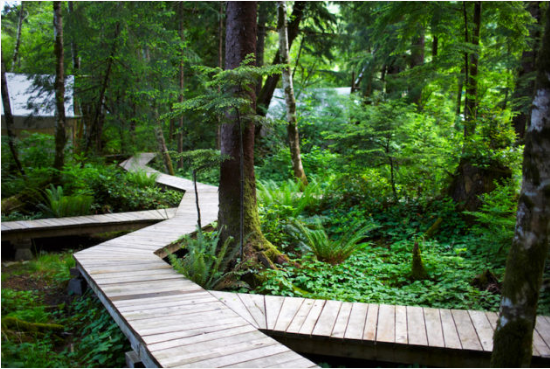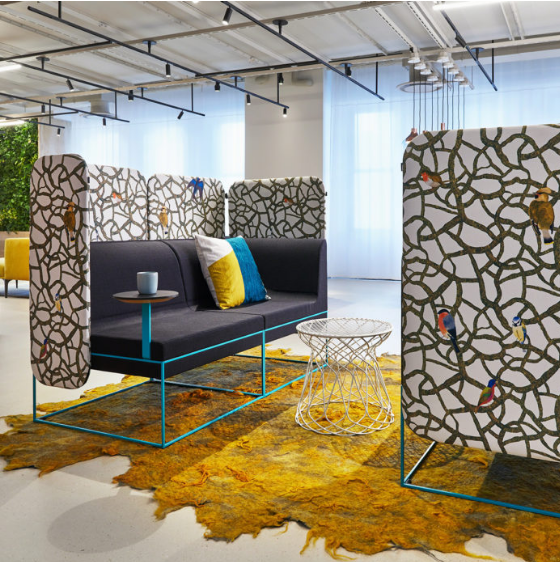PLANTS vs COVID ISOLATION
CONNECTING WITH NATURE
Nature is all around us. The sky, trees, air, wind, wildlife, and water are all parts of the great outdoors we CAN CHOOSE to experience every day. However, due to covid-19 most of us are spending too much time indoors, surrounded by concrete and glass away from the natural elements that connect us all. By electing to work inside, we’ve deprived ourselves, perhaps unknowingly, of things that would not only make us healthier, more productive, content, happier and most importantly right now, reduce stress levels. Currently, humans are fearful and stressed which is fuelled by an 'Unknown'. The message of this article is to 'Take positive action & connect with Nature'.
Studies show that nature benefits us. These benefits, which are important to a better existence, can help everyone adapt to new laws restricting our freedom, disrupting our routines and impacting on our health & wellbeing.
Biophilic design was derived from term “biophilia,” which means “love of life,” and was mainstreamed by American biologist and naturalist, Edward O. Wilson, 35 years ago. Wilson believed that people have an innate desire to be connected to nature. Biophilic design is the application of this connection to our life and work spaces through the incorporation of natural elements or bringing the outdoors.
How does biophilic design benefit us? During this pandemic it must be obvious to many that it is time to reset, to spend time navel gazing, consider changes that will make us healthier ... it's an opportunity to evaluate our quality of life. It's no secret that our modern society has amped up the stress levels and that urban high density development and technology are moving us further away from nature and its ability to reduce stress and aid in recuperation. Going deeper, extensive research from the last few decades demonstrates how biophilic design positively impacts our lives. The question NOW, is, Do we let Nature in as a recuperative, coping mechanism?
Well-Being.
Environmental psychology studies reveal that being connected to nature is an adaptive human function that allows for, and supports, psychological restoration. Visible connections to nature can reduce stress levels, and according to one study of office workers in Europe, well-being can increase by up to 15% when people work in surroundings integrated with natural elements. This is especially critical to address now, as people increasingly seek positive influences on their health and well-being in all aspects of their lives. Our personal performance is directly linked; healthy well-being can increase satisfaction, creativity, teamwork and productivity, all of which impact the way we and our families cope during this pandemic disruption.
Attention.
The theory of attention restorations, for one, suggests that nature captures our attention without us having to consciously focus on it simply because it is inherently fascinating. By focusing on nature, even subconsciously, humans can replenish mental stores of attention control. What’s more, little time is needed observing nature to reap its benefits. By taking nature-focused microbreaks — looking at nature through a window, taking a walk outside, sitting on a park bench for five minutes — can boost attention spans in your day.
Creativity.
Studies have also shown that nature can stimulate creativity. Creativity often depends on memory, which is improved through exposure to nature. Overall brain function is critical to lowering stress, which can also be accomplished by spending time in nature. Stress is often associated with mental blocks. Without these blocks, creativity flourishes.
Productivity.
It should come as no surprise that an individual’s well-being, attention, and creativity are directly proportional to productivity; when one or all increase, so does productivity. These aspects can be increased simultaneously by implementing basic biophilic designs. Simply exposing yourself or family to plants throughout the office, home or study areas can raise productivity by as much as 15%. If you have Year 12 children studying at home for their HSC then they can benefit even from a plant on their desk but ideally by adding more 'green' to their day.
Small biophilic changes can be made to almost any space, even on a limited budget. Here are a few of those ways.
Textures, Finishes, And Colors
If the budget does not allow to install a green wall then textures, finishes, and colors can go a long way to bringing nature indoors. Patterns inspired by nature displayed on walls, artwork, or textiles are easily applied and accessed and have shown to increase human engagement and ease mental fatigue. Wood or stone flooring, wallcovering, or special architectural touches also provide a stylish opportunity to introduce elements of biophilia.
Outdoor Workspaces
Many have set up home work stations so if it's possible , why not make it an outdoor workspace? Patios, lawns, or even a small seating area — especially when equipped with adequate WiFi — provide you or your children an alternative place to complete assignments, but also to recharge, revitalize, and find inspiration.
Green, Living Systems
Biophilic design wouldn’t exist without life, so adding plants – as living organisms –throughout a workspace is one of the simplest ways to exercise biophilia. Plants also improve the health of those around them by removing dust, mold, and CO2 levels. And because they come in all shapes, sizes, and varieties, potted plants can be placed almost anywhere within a space.
Additionally, living systems are becoming more mainstream. Living systems are basically a wall of plants, growing vertically, that can be scaled to fit any available space and easily removed for maintenance or replacement.








